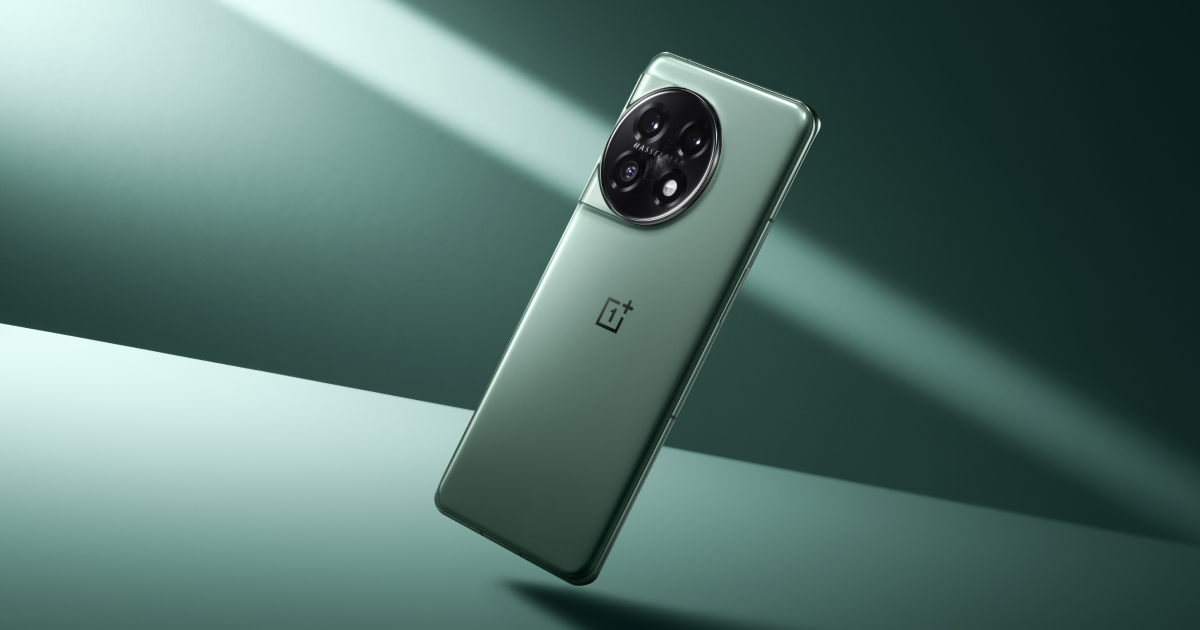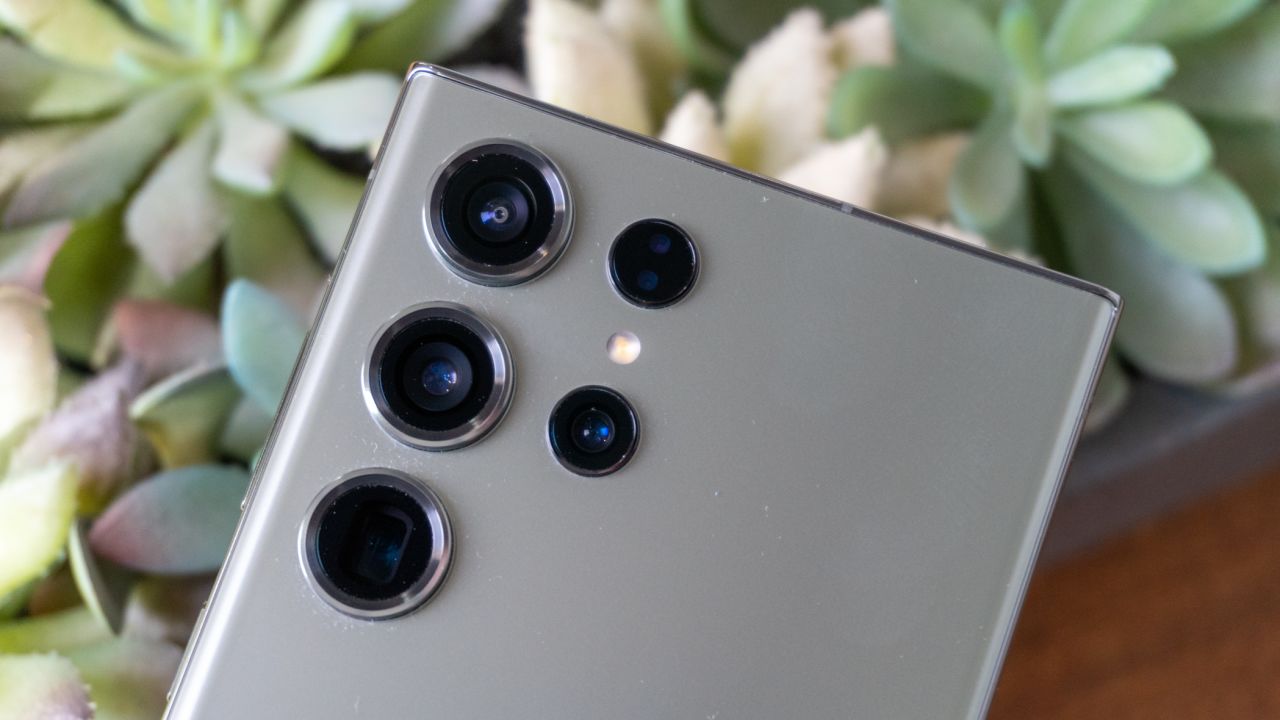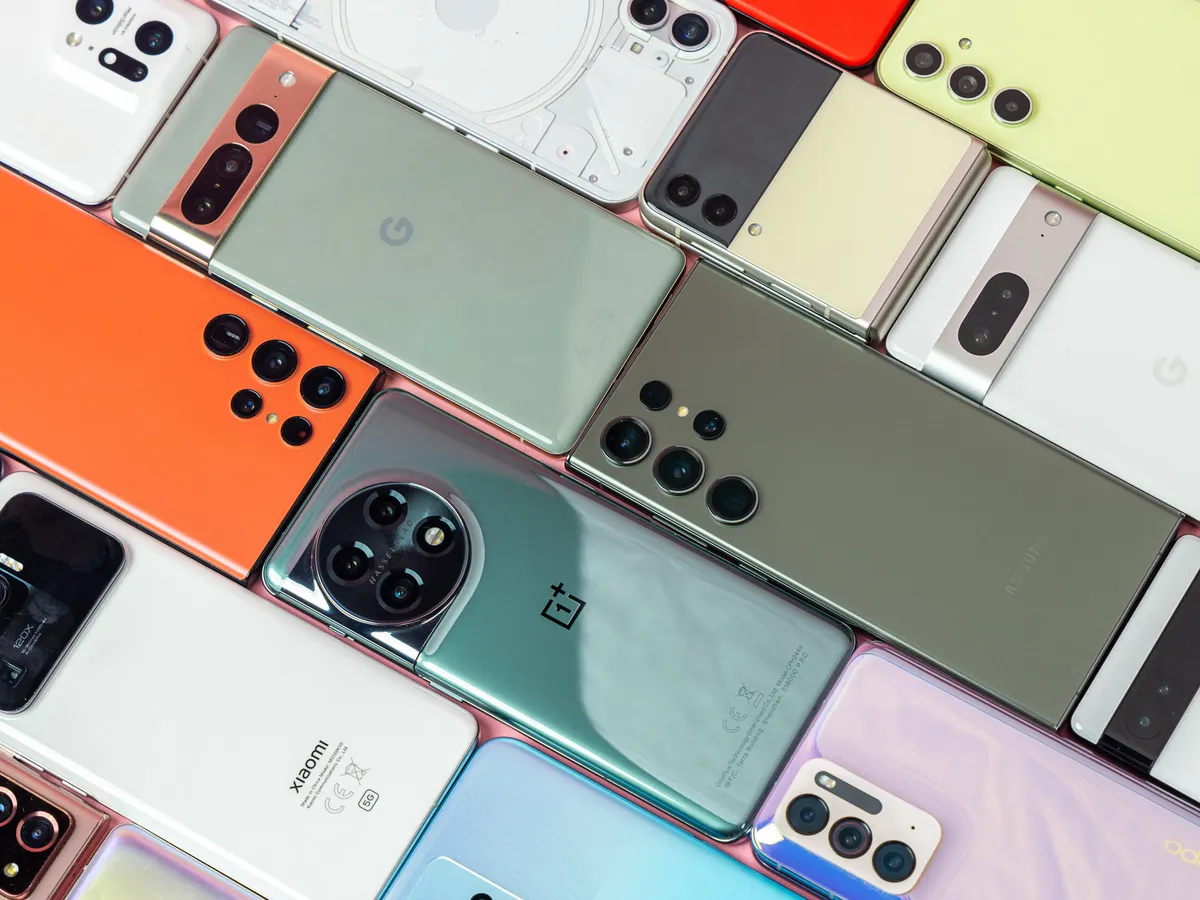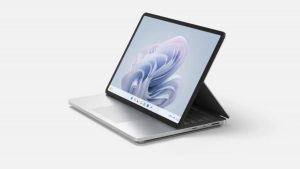In contrast to the iOS universe, where Apple dominates, the Android phone landscape is marked by its vast array of devices and brands. This diversity is undeniably one of its strengths. However, this abundance can be a double-edged sword, making the upgrade process slightly overwhelming for many. If you’re on the hunt for a new phone and are unsure where to begin, fret not. We’ve curated a list of the finest Android handsets catering to all budget ranges.
Criteria for Choosing an Ideal Android Phone
1. Performance
The primary attribute to consider when scouting for an Android phone is its performance. It’s not just about impressive numbers in benchmark tests or boasting the latest processor. Instead, a phone’s true performance is gauged by its day-to-day responsiveness. Whether you’re browsing articles, swiping through your social feeds, or diving into a graphics-intensive game, the device should deliver a seamless experience. Lag or stuttering can mar the user experience, so ensure that the phone handles multitasking adeptly, both in terms of computational and AI tasks.
2. Display
- OLED Panels:
Organic Light Emitting Diode (OLED) displays have become a favorite in the tech world. Unlike traditional LCDs, OLED panels don’t rely on a backlight. Each individual pixel produces its own light, which results in deeper blacks and a higher contrast ratio. The outcome is vibrant and saturated colors that make images and videos pop. - Brightness Level:
A brightness level of at least 600 nits is ideal for ensuring the display remains clear in various lighting conditions, particularly outdoors. The higher the nits, the better the screen performs under direct sunlight. With many mid-range and high-end phones now boasting brightness levels of 1,000 nits or more, users can expect exceptional visibility even in challenging environments. - Fast Refresh Rates:
A device’s refresh rate refers to how many times the screen updates its image per second. While 60Hz has been the standard for years, there’s been a noticeable shift to screens offering 90Hz or 120Hz refresh rates. This increase translates to smoother animations, scrolling, and gaming experiences. The fluidity added by these high refresh rates elevates the overall user interaction with the device.
In the ever-evolving world of smartphone displays, these three factors – OLED technology, high brightness levels, and faster refresh rates – are paramount in delivering a premium visual experience. When scouting for a new phone, keeping an eye out for these specs can make a notable difference in daily use.
3. Design
Understanding Ergonomics:
At its core, ergonomics is the study of designing products, systems, or processes to fit the users. In the context of smartphones, it means creating devices that don’t just look good but also feel good and are easy to use.
- Balanced Weight:
A well-balanced weight ensures the phone feels steady and secure in the hand. Too heavy, and it becomes cumbersome for prolonged use; too light, and it may feel cheap or fragile. - User-friendly Button Placement:
Buttons and touchpoints should be within easy reach, allowing for seamless operation with one hand when necessary. Whether it’s the power button, volume rockers, or fingerprint scanners, their placement should be intuitive, reducing the need for hand shuffling or awkward grips. - Quality Materials:
The materials used in a phone play a significant role in its ergonomic design. Quality materials like reinforced glass, aluminum, or ceramic not only add to the premium feel but also enhance durability. Moreover, the choice of material can affect the phone’s grip, thermal comfort, and overall tactile experience. - Curves and Contours:
The edges and curves of a phone are crucial for hand comfort. Phones with sharp edges can be uncomfortable to hold for extended periods, whereas those with smooth curves and contours tend to nestle comfortably in the palm. - Texture and Grip:
A phone’s back panel texture can greatly influence its grip. A slippery phone can be a nuisance and poses the risk of drops. Manufacturers often incorporate textures or specific finishes to improve the phone’s hold. - Accessibility:
The ergonomic design also considers the diverse range of users, including those with disabilities. Features like easy-to-use physical buttons, tactile feedback, or specific accessibility functions can make phones more user-friendly for everyone. - Thermal Comfort:
Phones that heat up quickly or get too warm can be uncomfortable to hold. Ergonomic designs ensure efficient heat dissipation, providing a comfortable hand feel even during intensive tasks.
In conclusion, while aesthetics play a pivotal role in attracting users to a particular device, it’s the ergonomic considerations that determine the long-term satisfaction and comfort of using it. A truly well-designed phone strikes the right balance between form and function, ensuring that the device is not only a treat for the eyes but also a pleasure to use.
4. Camera
- Lens Quality:
The quality of the lens is vital. A high-quality lens can capture sharper images with more detail and less distortion. Lens quality can be influenced by the materials used, the craftsmanship, and the optical design. - Software Enhancements:
Software plays an equally significant role as hardware. Advanced algorithms and image processing can enhance dynamic range, reduce noise, and improve sharpness. Features like AI scene recognition, which adjusts camera settings based on what you’re shooting, can also elevate photo quality. - Low-light Performance:
A good camera should be able to capture clear and well-lit images, even in poorly lit environments. This is where sensor size, lens aperture, and software optimizations come into play. Cameras with larger sensors and wider apertures can gather more light, while software can further refine and boost the results. - Optical Zoom:
Optical zoom uses lens magnification to get closer to a subject without sacrificing image quality. This contrasts with digital zoom, which simply crops and enlarges the image, often resulting in loss of detail. Phones with dedicated telephoto lenses can provide 2x, 3x, or even greater optical zoom capabilities. - Ultra-wide Shots:
Ultra-wide lenses allow you to capture more of a scene in one shot, which is great for landscapes, group photos, or tight spaces. They provide a broader field of view compared to standard lenses.
In summary, while megapixels are an aspect of camera quality, they are just one piece of the puzzle. A holistic approach to evaluating a phone’s camera should include lens quality, software, low-light capability, and versatility offered by features like optical zoom and ultra-wide shots. In the age of smartphone photography, these elements together define the camera’s prowess and its ability to deliver stunning visuals.
5. Battery Life
- Significance:
In today’s digital age, where we rely on our smartphones for everything from professional tasks to entertainment, maintaining a charge is essential. Our phones are more than just communication tools; they’re our navigators, entertainers, workstations, and often, our primary cameras. - Heavy Users:
For power users who frequently multitask, stream videos, play high-end games, or use their devices for work, a robust battery is non-negotiable. Constantly needing to reach for a charger or power bank disrupts productivity and can be particularly frustrating. - Travelers:
Those on the move, whether for business or leisure, often don’t have the luxury of easy access to charging points. A phone with a durable battery ensures they can navigate new cities, capture moments, stay connected, and even work on the go without the constant worry of running out of juice. - Day-to-day Practicality:
Even for average users, battery life can greatly impact the convenience factor. It’s about the peace of mind of leaving your home in the morning and knowing your device will last till evening without needing a top-up. - Battery Health Over Time:
It’s also important to consider how the battery performs in the long run. A phone might offer excellent battery life when it’s new, but how does it hold up after a year or two of daily use? Good battery health management by the manufacturer ensures the device doesn’t just offer longevity initially but continues to do so over time.
In conclusion, while modern smartphones pack an array of features, battery life remains one of the most crucial aspects. It’s a foundational feature that underpins the user experience, ensuring that all the impressive functionalities of a phone can be enjoyed without the looming concern of a dying battery. When choosing a new phone, it’s always wise to prioritize a device that offers a balanced blend of performance and enduring battery life.
6. Software Support
- Enhanced Security:
One of the primary reasons for regular software updates is security. With cyber threats constantly evolving, devices can become vulnerable if not periodically updated. Security patches protect users from known threats, ensuring personal data remains secure. - Performance Improvements:
Over time, software can become sluggish or less optimized. Regular updates often bring performance enhancements that ensure the device runs smoothly, reducing instances of lag, crashes, or other glitches. - New Features:
Manufacturers often introduce new functionalities with software updates. This means that even without purchasing a new device, users can gain access to the latest features or improvements to the phone’s user interface. - Bug Fixes:
No software is entirely devoid of bugs at launch. Regular updates address these issues, ensuring users have a more stable and reliable experience. - Compatibility:
As apps and services evolve, they often require the latest software versions to function correctly. Keeping the phone updated ensures that all apps run efficiently and users don’t miss out on any new offerings. - Extended Device Lifespan:
Ongoing software support can significantly extend the useful life of a device. Instead of feeling the need to upgrade to a new phone because of software limitations, users can retain their devices for longer periods, ensuring better value for their investment. - User Confidence:
A commitment to regular updates from manufacturers fosters trust. Users feel valued knowing the brand is invested in providing them with the best experience possible, even post-purchase.
In essence, while the hardware is undoubtedly essential in a smartphone, software is its lifeblood. A phone without regular software updates is like a car without maintenance – it might run fine for a while, but issues will arise sooner or later. When considering a new smartphone purchase, the promise of ongoing software support should be a top consideration, ensuring the device remains current, safe, and optimized throughout its life cycle.
In a nutshell, when searching for the perfect Android phone, don’t just go by the specs sheet or brand name. Instead, focus on how the phone feels and performs in real-world scenarios, aligning with your specific needs.
The Best Android Phones: A Closer Look
Best Android Phone Overall: Google Pixel 7 Pro
![]()
Pure Android Experience: As Google’s flagship, the Pixel 7 Pro offers the purest Android experience. This means timely updates, no bloatware, and the best integration of Google services.
Stunning Camera: Google’s Pixel series has always been lauded for its camera capabilities. With computational photography at its core, the Pixel 7 Pro delivers sharp, vibrant photos in nearly any condition. Plus, with features like Night Sight and Super Res Zoom, it’s a photographer’s dream.
Smooth Performance: Powered by the latest and greatest hardware specs, the Pixel 7 Pro promises a lag-free, fluid user experience, perfect for multitasking, gaming, and more.
Crisp Display: With an OLED screen that boasts a high refresh rate, visuals pop, ensuring smooth scrolling and top-tier media consumption.
Extended Software Support: Google’s commitment to regular updates ensures that Pixel 7 Pro users will enjoy the latest features and security patches for years to come.
(Note: The above description is a speculative take on the Google Pixel 7 Pro based on trends observed in previous Pixel devices as of my last training data in September 2021. Actual specifications and features may vary.)
Selecting the “best” Android phone ultimately depends on individual needs and preferences. While the Google Pixel 7 Pro might be the top pick for its well-rounded features and pure Android experience, other devices may excel in specific areas like gaming, photography, or battery life. Always consider what features matter most to you and cross-reference with current reviews and user feedback to make an informed choice.
Best Mid-range Android Phone: OnePlus 11 Breakdown

1. Large, Vivid Display:
The OnePlus 11 comes with a 6.7-inch 120Hz display, ensuring that users enjoy a vibrant and smooth visual experience, whether they’re browsing the web, watching videos, or playing games.
Strong Performance:
Powered by the Snapdragon 8 Gen 2 chip, the phone promises swift multitasking and a lag-free experience, making it comparable to many premium devices on the market.
Long-lasting Battery:
The generous 5,000 mAh battery ensures that users can get through a full day without constantly worrying about charging. And for those moments when you do need a quick boost, OnePlus’ 100-watt wired charging offers a rapid replenishment.
Enhanced Camera:
OnePlus’ collaboration with Hasselblad, a renowned camera company, ensures that users can capture high-quality photos with better color accuracy and sharpness.
Cost-Effective:
Balancing top-tier features with a mid-range price, the OnePlus 11 offers a compelling alternative to flagship devices that often come with heftier price tags.
Drawbacks:
- IP64 Rating: While the phone does offer some level of dust and water resistance, its IP64 rating is not as robust as some competitors, which might concern users who frequently expose their phones to the elements.
- Optical Zoom: With a 2x optical zoom, the OnePlus 11 may not cater to users looking for extensive zoom capabilities.
Commitment to Updates:
OnePlus’ commitment to providing four years of OS upgrades and five years of security patches is a promising sign of the company’s dedication to keeping the device fresh and secure for a prolonged period.
In summary, the OnePlus 11 seems to be an excellent choice for users who desire flagship-like features without spending a fortune. Its performance, display, and camera enhancements make it a strong contender in the mid-range market. Always ensure to consult the latest reviews and comparisons to ascertain if it fits your specific needs.
Best Budget Android Phone: Google Pixel 7a Overview
![]()
1. Affordable Excellence:
For just $500, the Pixel 7a provides a robust Android experience, making high-end features accessible to budget-conscious users.
2. Enhanced Performance:
The new Tensor G2 chip ensures faster and more efficient performance, ensuring users don’t compromise on speed even at this price point.
3. Improved Display:
The 90Hz display offers smoother animations and transitions, enhancing the user’s visual experience.
4. Wireless Charging:
For the first time in Google’s A-series, the Pixel 7a supports wireless charging, adding an element of convenience.
5. Durable Design:
With an IP67 water resistance rating, the Pixel 7a can handle splashes and brief submersions, giving users peace of mind. Plus, its design mirrors the more expensive Pixel 7, offering a premium feel at a budget price.
6. Stellar Support:
Five years of security updates and a minimum of three years for software updates mean that users can expect a safe and up-to-date experience throughout the life cycle of the phone.
Shortcomings:
- Zoom Capabilities: The absence of a dedicated zoom lens might deter photography enthusiasts who often use zoom features.
- Limited 5G Support: While the Pixel 7a offers sub-6GHz 5G support, users who desire mmWave 5G would need to opt for the pricier variant from Verizon.
In essence, the Google Pixel 7a presents a strong case for those seeking a budget phone without making significant compromises. Its combination of an updated design, enhanced performance, and prolonged support makes it an attractive option for those wanting top-tier features without the hefty price tag. As always, individual preferences will play a role in the final decision, so always weigh the pros and cons relative to your needs.
Best Premium Android Phone: Samsung Galaxy S23 Ultra Breakdown

1. Steep Price, Top-tier Experience:
Although the Galaxy S23 Ultra’s $1,200 price tag might be intimidating, it justifies the cost with a multitude of high-end features.
2. Immersive Display:
The 6.8-inch OLED display, accompanied by a 120Hz adaptive refresh rate, guarantees an outstanding visual experience, whether you’re streaming, gaming, or browsing.
3. Versatile Camera System:
The S23 Ultra boasts five distinct cameras. With a main, ultra-wide, 3x zoom, 10x zoom, and a selfie shooter, users can capture a wide array of shots with precision and clarity.
4. S Pen Inclusion:
The integrated S Pen is a boon for those who enjoy sketching, note-taking, or simply want a more precise input method. It transforms the phone into a dynamic tool for creativity and productivity.
5. Outstanding Battery Life:
A massive 5,000 mAh battery powers the S23 Ultra. Not only does this ensure all-day usage, but it ranks among the best battery performances in the current smartphone market.
6. Prolonged Software Support:
Samsung’s pledge to consistent software updates promises users four major OS upgrades and five years of regular security patches, ensuring the device remains updated and secure throughout its lifecycle.
In Summary:
The Samsung Galaxy S23 Ultra stands as the epitome of Android luxury. It seamlessly combines aesthetics, power, and versatility, setting a benchmark for premium smartphones. It’s an excellent choice for those willing to invest in a device that delivers unparalleled performance and a vast array of features. Before committing, it’s always wise to compare it with other premium models to ensure it aligns perfectly with your requirements.
Best Foldable Android Phone: Samsung Galaxy Z Fold 5 Breakdown

1. A Leader in the Foldable Category:
Even with other brands entering the foldable arena, the Samsung Galaxy Z Fold 5 remains the go-to option for users seeking the pinnacle of foldable innovation.
2. Enhanced Multitasking:
Samsung amplifies productivity with new gestures, enabling easy side-by-side multitasking and a more fluid transition from a full screen to a windowed app. Additionally, users can view up to four recent apps on the taskbar, streamlining their multitasking experience.
3. Superior Performance:
The Z Fold 5 is powered by the Snapdragon 8 Gen 2 chip, offering speedier performance compared to competitors like the Pixel Fold.
4. Efficient Battery Management:
Despite a slightly smaller battery (4,400 mAh) than some rivals, the Z Fold 5 optimizes its power consumption to deliver longer battery life.
5. Introducing the Flex Hinge:
One of the standout innovations in the Z Fold 5 is the Flex Hinge, allowing the device to close completely flat. This results in a sleeker, more compact form factor.
6. Steady Camera System:
While the cameras retain much of the previous generation’s specs, they are still capable performers. However, those seeking significant camera improvements might need to wait for the next iteration.
7. Premium Price Tag:
Starting at a steep $1,800, the Z Fold 5 is undeniably a luxury device. Its price reflects its position as a top-tier foldable, making it an investment rather than a casual purchase.
In Summary:
For tech enthusiasts and those craving the latest advancements in foldable technology, the Samsung Galaxy Z Fold 5 is a solid choice. It melds superior performance, innovative features, and sleek design. However, its high price means it’s most suitable for those who see the tangible benefits of a foldable device and are prepared to invest in them.




